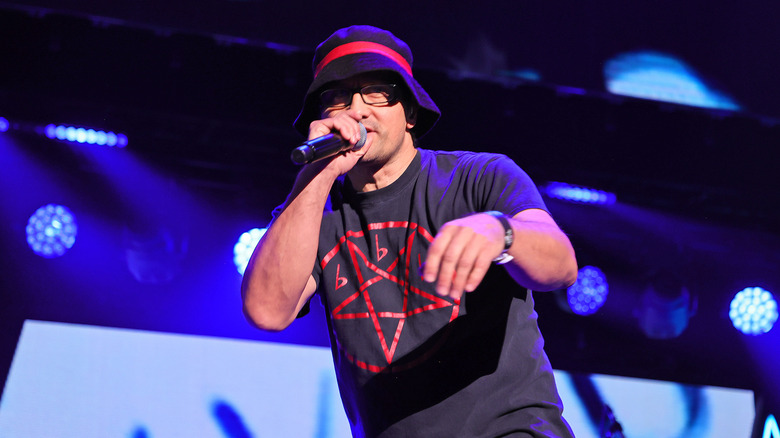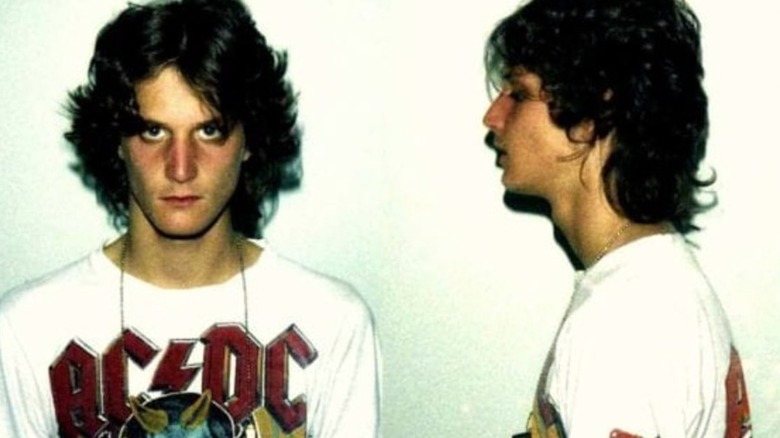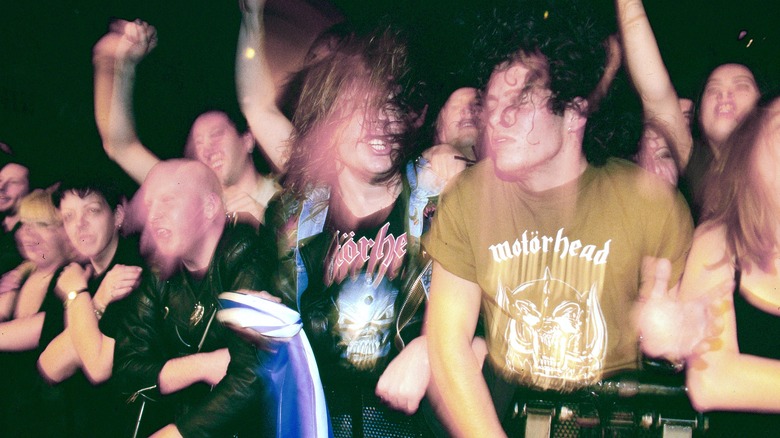The Dark Truth Behind Wheatus' Teenage Dirtbag
If you've seen the wholesome music video for the song, you'd be forgiven for thinking that Wheatus' iconic teen-angst hit "Teenage Dirtbag," is a simple song about a lovelorn teenager. In the video, the band strums their guitars in between clips from the movie "Loser," in which charmingly goofy Jason Biggs dreams about his teen crush.
In reality — teenage pining is only part of the story. The band has said that the song is also inspired by events following a real murder, one that happened close to where songwriter Brandon Brown grew up. The gruesome killing contributed to the Satanic Panic that swept the U.S. in the 1980s, a period of hysteria that saw everything from metal music to D&D condemned by nervous parents, petrified preachers, and tabloid journalists alike.
Brown took inspiration from the murder to sing about what it is like to be a misunderstood teen, unfairly lumped in with some of the very worst people around. The song grew to become a veritable outsider anthem and Wheatus' biggest hit.
Teen murder
In 1984, a troubled 17-year-old from Newport New York was arrested for a harrowing drug-induced murder. Wheatus frontman Brandon Brown was just 10 years old at the time — and the murder occurred in the woods directly behind his house.
The killer was a young man named Ricky Kasso, a disturbed teenager who was heavily into LSD. According to the book "The Acid King" (via Rolling Stone), On the night of the murder Kasso had been tripping with his friends in the woods, and while high, got into a fight with one of the other boys present, Gary Lauwers. During the scuffle, Kasso killed Lauwers by stabbing him multiple times in the back and face. Aside from its sheer brutality, the murder case was particularly memorable because Kasso had screamed "Say you love Satan!" at the boy as he was killing him. The murder was discovered some weeks later but Kasso hanged himself in jail before ever standing trial.
Although in reality, the murder was simply the act of one disturbed individual under the influence of powerful drugs, at the time there was a lot of misreporting on the case. While it was true that Kasso had a strange obsession with Satan and liked to get high in cemeteries, the media reported he was part of a full-blown Satanic cult. The Washington Post for example described Kasso as belonging to a devil-worshipping society "The Knights of the Black Circle," a group the paper claimed had more than 20 members. Such a cult never existed — but it made a good story and seemed to fit with contemporary anxieties about Satanism.
Writing Teenage Dirtbag
Ricky Kasso was a murderer — but he was also a heavy metal fan. In the most famous picture of the teen killer, he can be seen being led away in an AC/DC t-shirt. At the time, the case seemed to confirm some people's worst fears about the influence of "devil music" on their children.
As a kid, Brandon Brown was already a big metal fan but suddenly the music he loved was suspect. He told Tone Deaf, "I was 10 years old, walking around with a case full of AC/DC and Iron Maiden and Metallica — and all the parents and the teachers and the cops thought I was some kind of Satan worshipper. So that's the backdrop for that song." The community in which Brown and Kasso grew up was full of latch-key kids from impoverished families (via Cambridge Independent). Brown found the demonization of bands was despicable, an attempt to shift the blame away from the real issues plaguing the area.
The song ultimately became a big middle finger to the adult world that made assumptions about kids like Brown. The singer read the phrase "Teenage Dirtbag" in a Rolling Stone magazine piece about the murder, and he would one day use it when penning the song. He explained "so when I sing: 'I'm just a teenage dirtbag', I'm effectively saying: 'Yeah, f**k you if you don't like it. Just because I like AC/DC doesn't mean I'm a devil worshipper, and you're an idiot. That's where it comes from."


